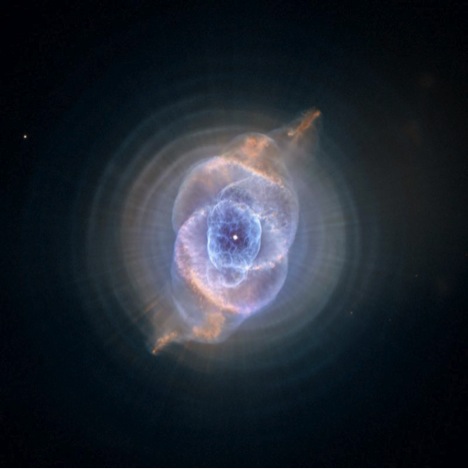Click here to read an original op-ed from the TED speaker who inspired this post and watch the TEDTalk below.
In his famous book The Descent of Man and Selection in Relation to Sex, Charles Darwin insightfully concluded: "We thus learn that man is descended from a hairy, tailed quadruped, probably arboreal in its habits and an inhabitant of the Old World. This creature, if its whole structure had been examined by a naturalist, would have been classed among the Quadrumana [primates with four 'hands,' such as apes], as surely as the still more ancient progenitor of the Old and New World monkeys." These bold ideas have inspired the tireless efforts by many members of the Leakey family to search for and discover fossil hominids in Africa.
But, what about the most fundamental building blocks of life itself? Where did the atoms of hydrogen, carbon, oxygen, phosphorus, and iron (all essential for life) come from? When Joni Mitchell sang "We are stardust," she was poetically giving the correct answer to this question.
In a monumental paper published in 1957, astrophysicists Geoffrey and Margaret Burbidge, Willy Fowler and Fred Hoyle proposed that most of the chemical elements were synthesized from hydrogen and helium in the nuclear furnaces at the centers of stars. Hoyle, in particular, explained how during the process of stellar evolution, stars continuously battle against gravity. In the absence of a force to oppose gravity's attraction, stars would have simply collapsed to their centers. By 'igniting' nuclear fusion reactions in their cores, stars generate extremely high pressures that support them against their own weight. After each nuclear fuel is consumed (first hydrogen fuses into helium, then helium into carbon, carbon into oxygen, and so on), gravity causes the core to contract, thereby increasing the temperature and initiating the next nuclear reaction. This way, new elements are synthesized all the way up to iron--the most stable nucleus. Depending on the initial mass of the star, its outer layers are ejected into interstellar space either through a relatively gentle process known as a planetary nebula (if the star's mass is less than about eight times the mass of the Sun; Figure 1), or via a dramatic explosion known as a supernova (if the star is more massive than eight solar masses; Figure 2). Atoms heavier than iron are synthesized during the explosions.

Figure 1. The "Cat's Eye" nebula. Credit: NASA, ESA, HEIC, and The Hubble Heritage Team (STScI/AURA).
All the forged and subsequently ejected elements enrich the interstellar gas from which later generations of stars, planets, and life form. No wonder that the Burbidges, Fowler, and Hoyle started their epoch-making paper with a quote from William Shakespeare's King Lear: "It is the stars, the stars above us, govern our conditions."
And what about hydrogen and helium? As it turned out, Hoyle and his collaborators did not manage to account for the cosmic abundances of the lightest elements (hydrogen, helium, lithium, beryllium, and boron) by forming them inside stars. For those, physicists George Gamow and Ralph Alpher had another brilliant idea -- they formed in the initial, extremely hot and dense state of the universe known as the Big Bang.
The picture that emerges is absolutely amazing. The individual atoms that form the two strands of our DNA may have originated billions of years ago at the centers of different stars. And the hydrogen atoms -- that hold the basic structures of our proteins together -- date all the way back to the Big Bang. This grand scheme for the history of life's ingredients gives a whole new meaning to Darwin's profound pronouncement: "Man with all his noble qualities... still bears in his bodily frame the indelible stamp of his lowly origin."

Figure 2. The ring around Supernova 1987A. Credit: NASA, ESA, and P. Challis (Harvard-Smithsonian Center for Astrophysics).
Ideas are not set in stone. When exposed to thoughtful people, they morph and adapt into their most potent form. TEDWeekends will highlight some of today's most intriguing ideas and allow them to develop in real time through your voice! Tweet #TEDWeekends to share your perspective or email tedweekends@huffingtonpost.com to learn about future weekend's ideas to contribute as a writer.